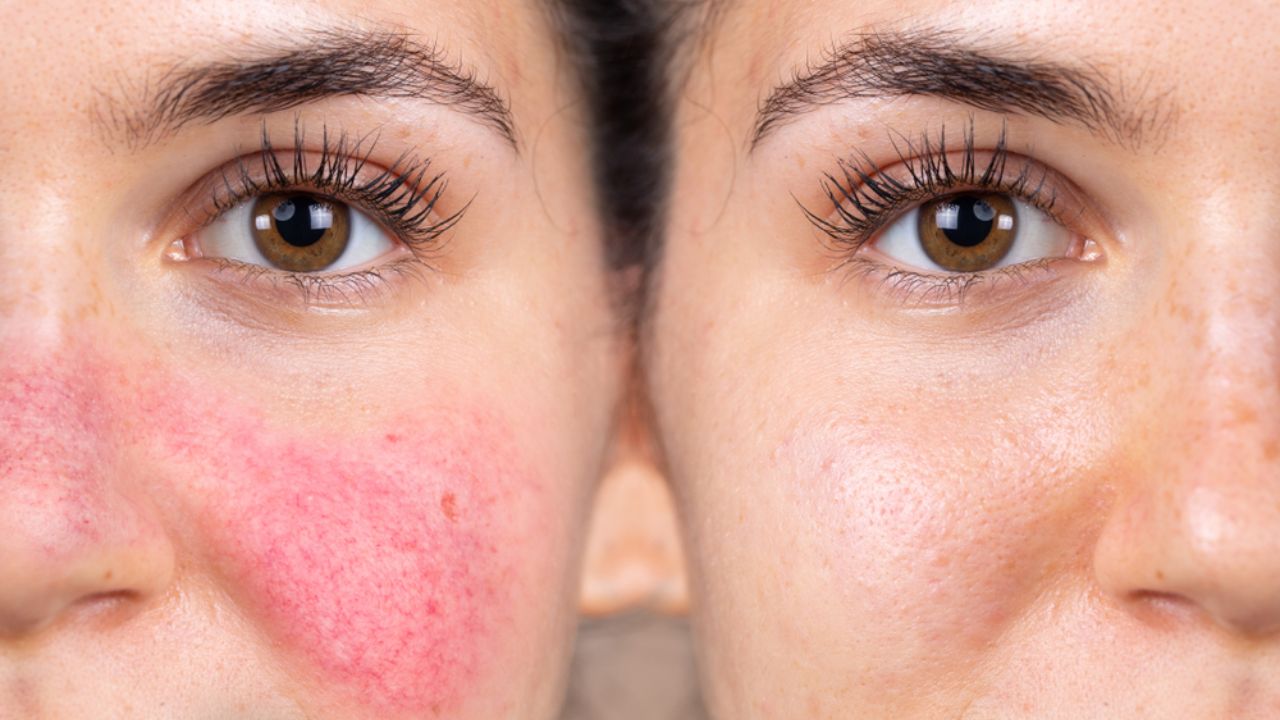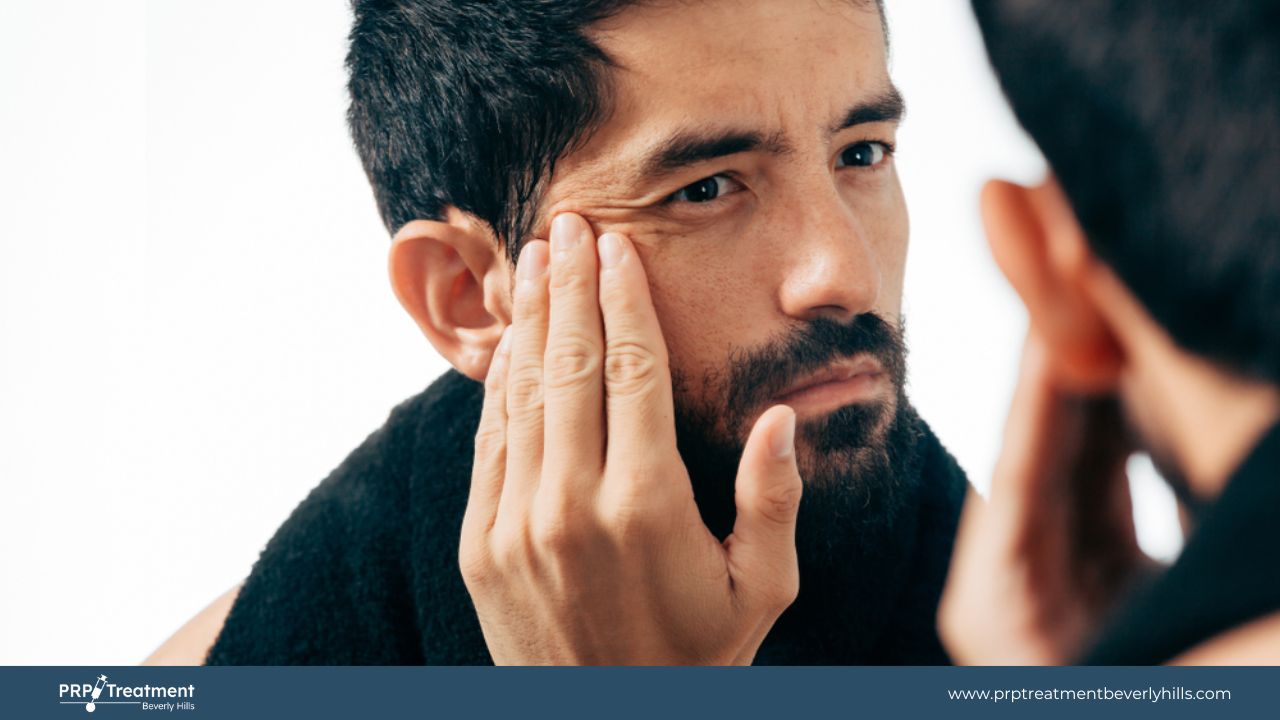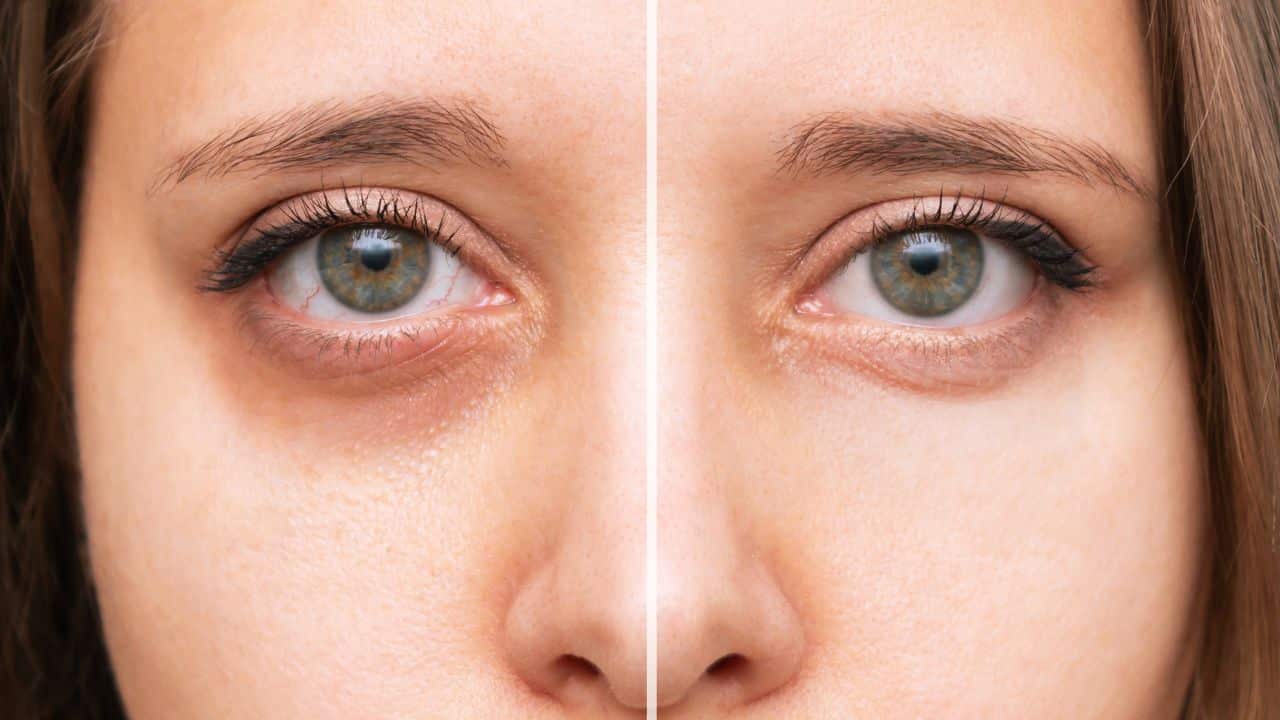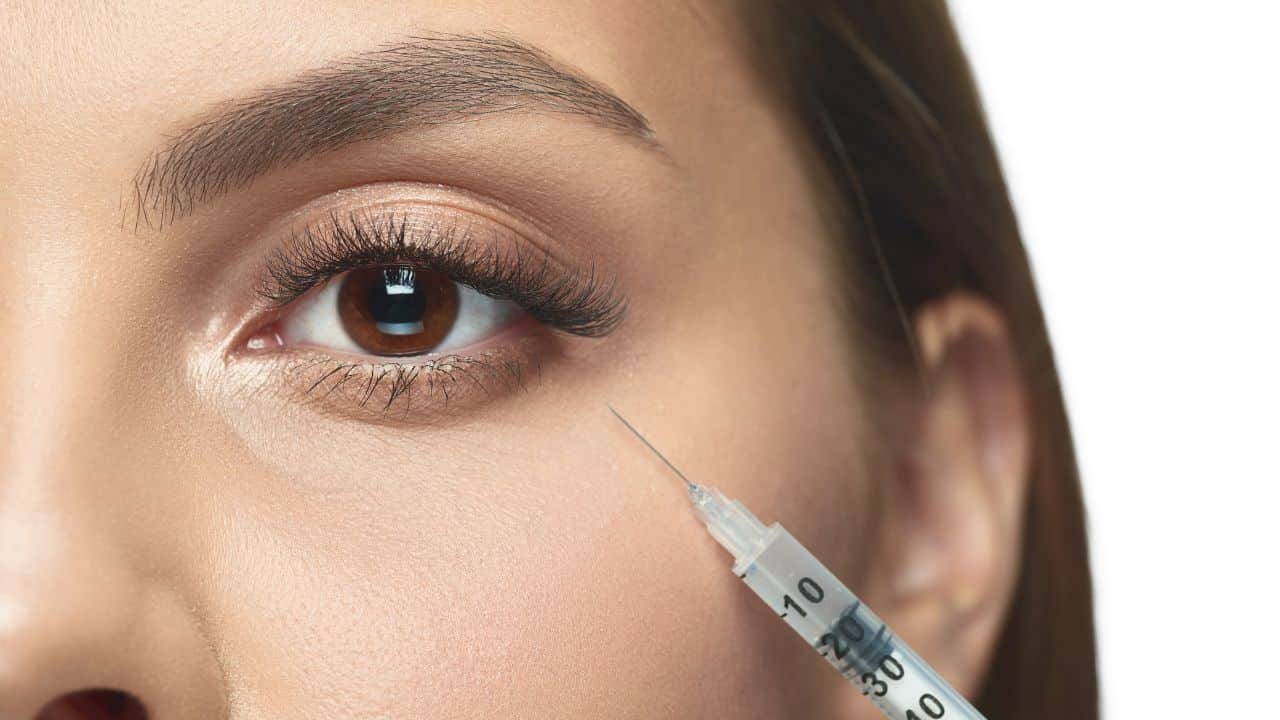Welcome to the world of PRP (Platelet-Rich Plasma) therapy, a revolutionary, natural treatment that’s making waves in the skincare industry! You might wonder about the buzz and how it could benefit your skin. Well, you’re in the right place!
This blog post will delve into the top 5 skin issues PRP therapy can effectively address. PRP offers a versatile solution for various skin concerns, from smoothing wrinkles to fading acne scars.
So, sit back, relax, and explore how this cutting-edge treatment can help you achieve the radiant, healthy skin you’ve always desired – without needing a medical degree to understand the process!
PRP Treatment For Skin: 5 Options
PRP is effective for numerous skin and health issues. However, skin treatments are more popular among the options. Here we have compiled the five most common skin issues PRP can handle.
Fine Lines and Wrinkles
As we age, the appearance of fine lines and wrinkles can be an unwelcome reality. But fear not! PRP therapy has proven to be a game-changer in the battle against these pesky signs of aging. By harnessing the power of your body’s natural healing abilities, PRP therapy stimulates collagen production and promotes skin regeneration, helping to smooth out those unwanted lines.
How does PRP work? It’s derived from your blood and contains concentrated growth factors encouraging cell renewal and tissue repair. When injected into targeted areas, PRP triggers collagen and elastin production, the proteins responsible for maintaining firmness and elasticity.
If you’re still skeptical, research backs it up! A study published in the Journal of Cosmetic Dermatology found that PRP therapy significantly improved skin texture and reduced wrinkles. Patients who received PRP treatment reported firmer, smoother skin with fewer wrinkles.
A 50-year-old patient approached us, concerned about her crow’s feet and laugh lines. After a series of PRP treatments, her skin is visibly firmer, and her wrinkles are barely noticeable. She’s ecstatic about her refreshed and revitalized look; you could be too!
Acne Scars
Acne scars can be a constant reminder of past breakouts and a source of frustration for many people. Fortunately, PRP therapy offers a promising solution for those looking to improve the appearance of these stubborn scars.
The science behind it is fascinating! When PRP is injected into areas with acne scarring, it stimulates the growth of new, healthy skin cells and boosts the skin’s natural healing process. As a result, skin texture becomes smoother, and the appearance of acne scars is diminished.
Research supports the efficacy of PRP for acne scars as well. A study published in the Journal of Cutaneous and Aesthetic Surgery found that combining PRP with microneedling significantly improved the appearance of acne scars. Patients experienced noticeable changes in their scars’ depth, size, and overall visibility.
Last month, a 28-year-old male patient came to our clinic concerned about the acne scars on his cheeks. After undergoing a series of PRP treatments combined with microneedling, he saw a remarkable improvement in his skin texture. The once-prominent acne scars have faded, and he feels more confident and comfortable.
Sun Damage and Pigmentation Issues
Sun damage, age spots, and other pigmentation issues can make our skin appear uneven and aged. The good news is that PRP therapy can come to the rescue, helping to reduce these imperfections and reveal a more radiant, even-toned complexion.
The magic of PRP lies in its ability to promote skin regeneration and repair damaged skin cells. When PRP is injected into areas with sun damage or pigmentation, it encourages the growth of new skin cells and the shedding of old, discolored ones. This process helps to even out your skin tone and reduce the appearance of sunspots, age spots, and other pigmentation issues.
The effectiveness of PRP for treating pigmentation has also been supported by research. A study in the Journal of Cosmetic and Laser Therapy found that PRP therapy significantly improved the appearance of melasma, a common pigmentation disorder, in most patients.

Skin Tightening and Elasticity
Loose, sagging skin can be a telltale sign of aging, often leaving us less confident in our appearance. But don’t worry; PRP therapy offers an innovative solution to help restore your skin’s firmness and elasticity!
By leveraging the power of your body’s natural healing capabilities, PRP therapy stimulates collagen and elastin production, the proteins responsible for maintaining skin structure and firmness. When injected into areas with loose or sagging skin, PRP boosts collagen and elastin production, resulting in tighter, more youthful-looking skin.
Numerous studies have highlighted the effectiveness of PRP in improving skin elasticity and tightness. One such study, published in the Aesthetic Surgery Journal, found that PRP therapy significantly enhanced skin tightness and elasticity in patients who underwent the treatment.
Let’s look at a real-life success story of a 55-year-old patient who sought our help to address sagging skin around his jawline and neck. After undergoing a series of PRP treatments, he has noticed a significant improvement in the firmness and tightness of his skin, giving him a more youthful and rejuvenated appearance.
Rosacea and Redness

Living with rosacea or persistent skin redness can be frustrating and challenging. Luckily, PRP therapy has emerged as a potential solution, offering relief to those dealing with these skin conditions.
PRP’s growth factors have anti-inflammatory properties that help to reduce inflammation and redness in the skin. When PRP is injected into areas affected by rosacea or other types of skin redness, it promotes the growth of healthy skin cells and helps to soothe and calm inflamed skin.
Research has shown promise in using PRP to treat rosacea and redness. A study in the Journal of Dermatological Treatment found that PRP therapy significantly reduced the severity of rosacea symptoms in patients who received the treatment.
We hope this exploration of the top 5 skin issues treated with PRP therapy has been insightful and informative. With its versatile and natural approach, PRP therapy offers a range of potential benefits for various skin concerns, helping patients achieve healthier, more radiant skin.
PRP vs. Traditional Skin Treatments: A Comparison
While traditional treatments like chemical peels, dermal fillers, and laser therapy have been popular for years, PRP therapy has emerged as a powerful, natural alternative. Let’s compare PRP with traditional skin treatments to help you decide the best approach for your skincare needs.
Method of Action
Traditional treatments like chemical peels, dermal fillers, and laser therapy primarily focus on the skin’s surface and involve using chemicals, synthetic materials, or external energy sources. On the other hand, PRP therapy leverages your body’s natural healing abilities by utilizing the growth factors in your blood to stimulate skin regeneration and repair.
Invasiveness and Downtime
Chemical peels and laser therapy can be quite invasive and may require significant downtime for recovery. PRP therapy is minimally invasive, with minimal downtime and fewer side effects. Patients can resume their activities shortly after treatment.
Safety and Side Effects
Traditional skin treatments risk side effects like infection, scarring, or discoloration. Since PRP is derived from your blood, the risk of adverse reactions is considerably lower. PRP therapy is considered a safe option with minimal side effects, making it suitable for a wider range of patients.
Results and Longevity
While traditional treatments like dermal fillers can provide immediate results, their effects tend to fade over time, requiring regular touch-ups. PRP therapy, on the other hand, promotes the skin’s natural healing process and collagen production, leading to longer-lasting, more natural-looking results.
Cost and Accessibility
Traditional skin treatments can be expensive, especially when considering the need for regular maintenance sessions. PRP therapy is more affordable in the long run, as its effects last longer and require fewer follow-up treatments.
Post-Treatment Care: How to Maximize Your PRP Therapy Results
After investing time and resources into PRP therapy, knowing how to care for your skin post-treatment is essential to maximize your results. This section will guide you through crucial post-treatment care tips to ensure you get the most out of your PRP therapy.
- Keep Your Skin Clean and Hydrated: Maintaining clean and well-moisturized skin is crucial after PRP therapy. Gently cleanse your face with a mild, non-abrasive cleanser to remove any dirt or impurities. Follow up with a hydrating moisturizer suitable for your skin type to lock in moisture and promote skin healing.
- Avoid Direct Sun Exposure: Your skin may be more sunlight-sensitive after PRP therapy. To protect your skin and prevent sun damage, avoid direct sun exposure for at least a week after treatment. When you go outside, wear a broad-spectrum sunscreen with an SPF of 30 or higher and a wide-brimmed hat for added protection.
- Refrain from Using Harsh Skincare Products: For a week or two after your PRP therapy, avoid using harsh skincare products such as exfoliants, retinoids, or products containing alcohol. These can irritate and compromise the healing process. Instead, opt for gentle, soothing products designed for sensitive skin.
- Stay Hydrated and Maintain a Healthy Diet: What you put into your body can impact your skin’s health and the effectiveness of your PRP therapy. Stay well-hydrated by drinking plenty of water and consuming a balanced diet of vitamins, minerals, and antioxidants to support your skin’s healing process.
- Avoid Strenuous Exercise and Heat Exposure: Intense physical activity and exposure to heat sources like saunas or hot showers can increase blood flow to the skin, causing redness and swelling. To minimize these effects, avoiding strenuous exercise and heat exposure for 24 to 48 hours after your PRP treatment is best.
- Follow Your Provider’s Recommendations: Your skincare professional may provide additional post-treatment care instructions tailored to your needs. Follow these recommendations to optimize your results and ensure a smooth recovery.
Final Words
PRP therapy offers a promising, natural solution for various skin concerns, from wrinkles and acne scars to sun damage and rosacea. By leveraging your body’s natural healing abilities, PRP therapy provides long-lasting results with minimal side effects and downtime.
If you’re considering PRP therapy, consult a qualified professional to determine if it’s the proper treatment for your skin needs. With the right care and patience, you can enjoy a revitalized, rejuvenated complexion and renewed confidence in your skin.
Discover the transformative power of PRP therapy and embrace a healthier, more radiant you!





